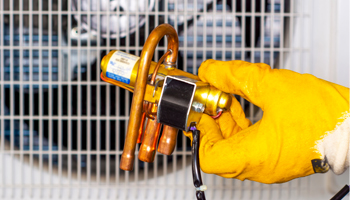
Heat pumps are a different animal from furnaces and have some uniquely different parts. If you’re servicing or repairing one that is underperforming, don’t overlook the reversing valve when doing your diagnostic checks.
HVACR Reversing Valve
One of the most critical components in a heat pump is the reversing valve. This valve allows the heat pump to switch from heating the air to cooling the air. It does this by reversing the refrigerant flow in the system. So, instead of removing heat from the air like an air conditioner, it adds heat.
When this valve malfunctions, the system won’t heat or cool efficiently, but symptoms don’t always point to the reversing valve. It’s easy to confuse defective reversing valves with faulty heating and cooling processes. That’s because the symptoms of inefficient heating and cooling are essentially the same.
Stuck Valves
If the system won’t switch from heating to cooling, your problem could be a stuck valve. If the valve is stuck, tapping on the body of the valve with a plastic tool may free it. Don’t bang on it with a hammer as that may bend or break some of the sensitive internal pieces. A plastic tool is all you need. you should also check and clean the capillaries for obstructions. This may free the valve. Look for dents on the valve that may have caused an obstruction inside and check to see if it has scorch marks that could be caused by overheating. If, after examining these components, you still do not free the valve, the system may have an electrical problem.
Electrical Issues
The solenoid in the reversing valve energizes to switch the heat pump from heating to cooling. If the solenoid is defective, it could turn-off mid-operation and not fully open or close. Use your voltmeter to see if the valve is energized and magnetized. If it isn’t, your problem could be a disconnected wire or a faulty solenoid. If everything is working fine electronically but you still aren’t heating or cooling effectively, you could have a leak inside the reversing valve.
Leaking Valves
Before you check to see if you have a leak inside your reversing valve, ensure that your system has the proper refrigerant charge. Overcharged or undercharged systems could cause the reversing valve to malfunction. If your reversing valve has a leak inside, it’s splitting the refrigerant from the hot to the cool side. To check this in the heating mode, compare the temperatures of the suction line from the outside to the suction valve at the bottom. If the difference is more than 3°F, the valve needs to be changed. In cooling mode, check both reversing lines the same way you did for heating mode. A difference higher than 3°F means the valve should be replaced.